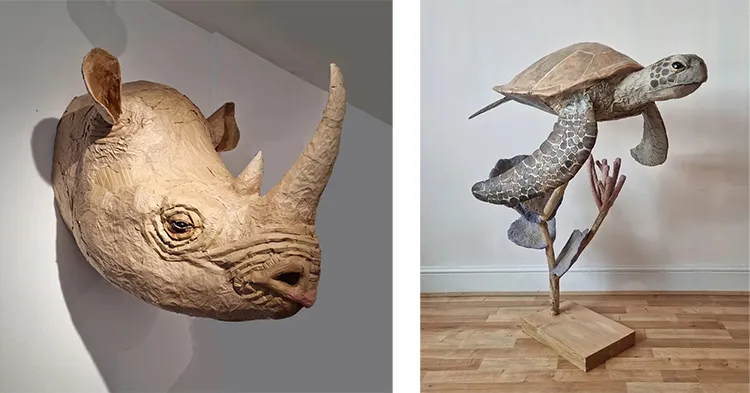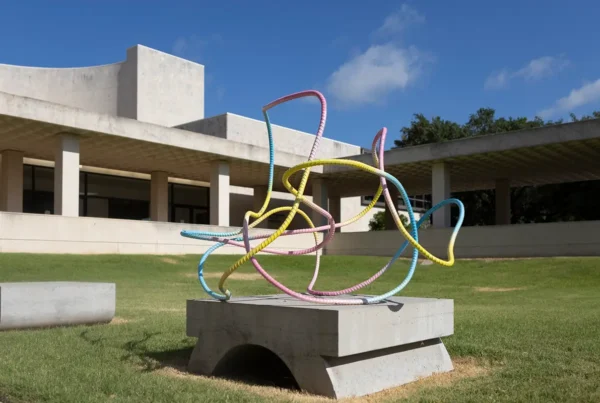The Artistic Genesis of Josh Gluckstein
From the bustling urban sprawl of London, Josh Gluckstein emerged as a distinguished voice in wildlife art, harnessing his passion for the natural world through his creative endeavors. Born in 1991, this London-based artist has adeptly blended his artistic talents with an unwavering commitment to environmental sustainability. Gluckstein’s journey into the arts began with portraiture, capturing the visages of individuals he met during his extensive travels. However, it was the allure of wildlife that truly captivated his imagination and redirected his focus towards the animal kingdom. These majestic creatures, encountered during his voyages across continents from Asia to Africa, not only inspired his artworks but also instilled a deep sense of responsibility towards conservation.
Transitioning from paint to sculpture, Gluckstein found his unique voice through a medium as commonplace as it is versatile: cardboard. The discovery of this material during the quiet introspection of lockdown marked a pivotal turn in his artistic practice. Cardboard, with its subtle textures and earthy tones, offered Gluckstein a sustainable canvas to portray the raw emotion and intricate beauty of wildlife. His approach is profoundly influenced by the principles of zero waste, turning a simple packing material into striking, life-sized animal sculptures that are both an artistic statement and a clarion call for conservation.
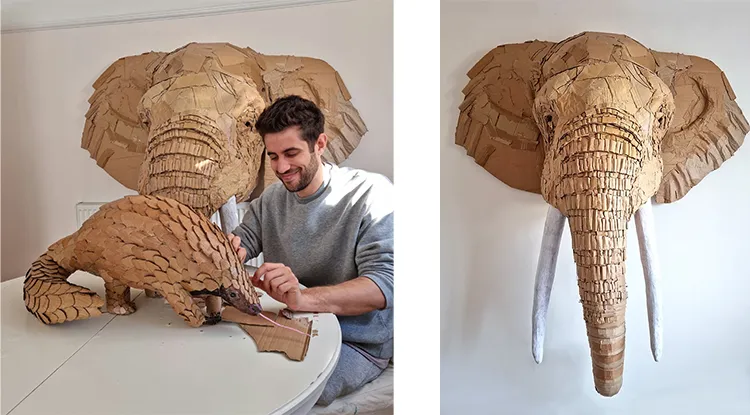
Josh Gluckstein: A Sculptor of the Wild
The essence of Josh Gluckstein’s work lies in the powerful intersection of art and advocacy. His sculptures, ranging from the regal poise of African elephants to the expressive faces of endangered primates, are not mere representations; they are vibrant pleas for awareness and action. Each piece, crafted from recycled cardboard, embodies the spirit of the animal it represents, brought to life through Gluckstein’s meticulous manipulation of this humble material. The artist’s ability to evoke the subtle nuances of animal expressions and textures is nothing short of transformative, offering viewers a new lens through which to view both art and conservation.
Gluckstein’s artistic endeavors reach beyond the visual, embedding a deeper narrative of ecological urgency within each sculpture. His recent solo exhibition, ‘Trafficked,’ beautifully encapsulates this mission. Here, Gluckstein adorned his cardboard creations with gold leaf on specific parts targeted by poachers, such as tusks and horns, symbolically elevating the creatures to a status worth more than their physical value. The exhibition not only spotlighted the plight of trafficked species but also raised significant funds for wildlife conservation, demonstrating how art can be a potent catalyst for change. Through partnerships with galleries and conservation organizations like WWF, Gluckstein has managed to meld his creative pursuits with tangible support for the very creatures that inspire his art.
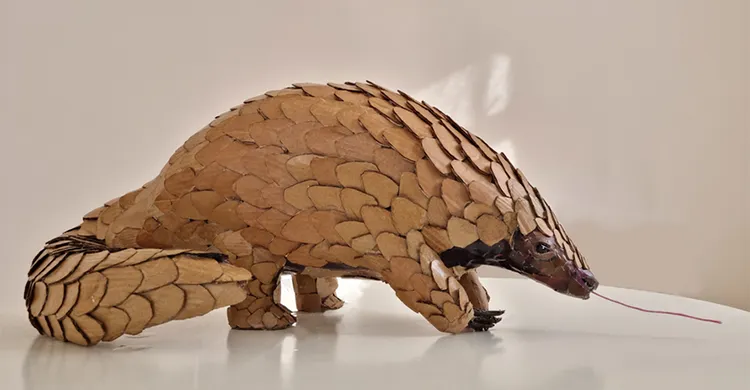
Josh Gluckstein: An Artist’s Medium and Message
Josh Gluckstein’s choice of medium is as much a part of his artistic statement as the subjects he sculpts. Cardboard, often overlooked and relegated to the realm of packaging, has been elevated in his hands to a primary vehicle for artistic expression. The artist’s fascination with this material stems from its inherent qualities of adaptability and availability, which perfectly align with his sustainable ethos. Gluckstein revels in the challenge of transforming this everyday material into something extraordinary, utilizing its varied textures and hues to mimic the natural markings of wildlife. His method involves an intricate process of layering, cutting, and shaping, which not only mimics the physical attributes of his subjects but also encapsulates their essence and vitality. This innovative use of recycled materials highlights the potential for sustainability in art, proving that creative reuse can lead to remarkable aesthetic and environmental outcomes.
Moreover, Gluckstein’s artistic process is a testament to the unpredictable nature of creativity. Describing his approach as ‘messy and unpredictable,’ he embraces the spontaneity that comes with his choice of materials and the subjects he portrays. This spontaneity is evident in his sculptures, where the raw and organic feel of the cardboard brings a dynamic quality to static forms. It is this ability to capture motion and emotion in a medium so rigid that sets Gluckstein apart in the world of wildlife art. His works are not static displays but vibrant pieces that seem to pulse with life, inviting viewers to engage with the art on a deeper level and reflect on the broader message of conservation and sustainability that underpins his work.
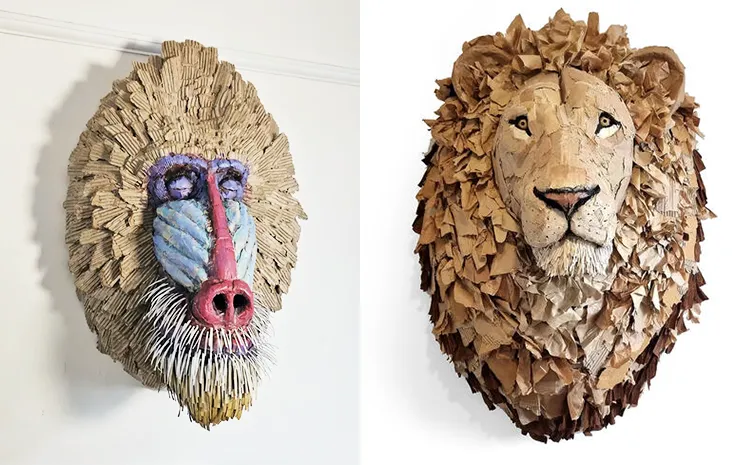
Josh Gluckstein: Advocacy Through Art
Beyond the visual appeal of his sculptures, Josh Gluckstein is deeply committed to the cause of wildlife conservation. This commitment is not just thematic but an active part of his artistic practice. Through his art, Gluckstein has become an advocate for the natural world, using his sculptures to raise awareness about the impact of human activity on wildlife. His firsthand experiences with pollution and habitat destruction during his travels have profoundly influenced his work, driving him to use his art as a tool for environmental activism. By integrating messages of conservation into his exhibitions and sales, he ensures that his art extends its reach from galleries into the realms of conservation impact, making a tangible difference in the efforts to protect endangered species.
The effectiveness of Gluckstein’s advocacy is exemplified in his partnerships with conservation organizations, where a portion of his art sales is donated to support wildlife protection initiatives. His recent collaboration with the Woolff Gallery and the WWF is a highlight of how art can support broader ecological goals. Such initiatives not only fund conservation efforts but also educate the public about the urgent need for environmental stewardship. Looking ahead, Gluckstein plans to expand his involvement in conservation, expressing a desire to return to hands-on volunteer work and potentially use his sculptures in fundraising auctions. This blend of artistic creation and active conservation efforts encapsulates the heart of Gluckstein’s practice: art not just as an expression of beauty, but as a meaningful contribution to the preservation of the very beauty it seeks to capture.
